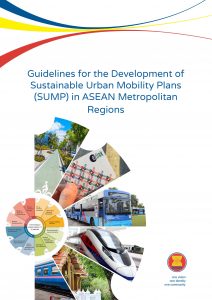- ABOUT ASEANThe Association of Southeast Asian Nations, or ASEAN, was established on 8 August 1967 in Bangkok, Thailand, with the signing of the ASEAN Declaration (Bangkok Declaration) by the Founding Fathers of ASEAN: Indonesia, Malaysia, Philippines, Singapore and Thailand. Brunei Darussalam joined ASEAN on 7 January 1984, followed by Viet Nam on 28 July 1995, Lao PDR and Myanmar on 23 July 1997, and Cambodia on 30 April 1999, making up what is today the ten Member States of ASEAN.Menu
- WHAT WE DO
ASEAN organs always strive to achieve ASEAN’s goals and objectives, the Secretary-General of ASEAN and the ASEAN Secretariat shall be functioned as coordinating Secretariat to help facilitate effective decision-making withing and amongst ASEAN bodies. In addition, each Member State shall appoint a Permanent Representative to liaise with Secretary-General of ASEAN and the ASEAN Secretariat
Menu - WHO WE WORK WITH
ASEAN shall develop friendly relations and mutually beneficial dialogues, cooperation and partnerships with countries and sub-regional, regional and international organisations and institutions. This includes external partners, ASEAN entities, human rights bodies, non-ASEAN Member States Ambassadors to ASEAN, ASEAN committees in third countries and international organisations, as well as international / regional organisations.
Menu - OUR COMMUNITIES
The rodmap for an ASEAN Community (2009-2015) was declared by the leaders in 2009. The ASEAN Community, anchored on three community pillars: Political-Security Community, Economic Community, Socio-Cultural Community was launched in 2015. The ASEAN 2025: Forging Ahead Together was introduced in 2015 as a Post-2015 Vision. It comprises the ASEAN Community Vision 2025, the ASEAN Political-Security Community Blueprint 2025, the ASEAN Economic Community Blueprint 2025 and the ASEAN Socio-Cultural Community Blueprint 2025
Menu - SITEMAP
Guidelines for the Development of Sustainable Urban Mobility Plans (SUMP) in ASEAN Metropolitan Regions
Author:ASEAN Secretariat

Abstract
These Guidelines present Sustainable Urban Mobility Planning as a strategic and integrated methodology which aims at improving accessibility and quality of life through a shift towards sustainable mobility. These Guidelines intend (i) to identify the challenges in urban transport planning and ASEAN policies related to urban mobility and (ii) to create awareness among the actors for further discussions on the required preconditions, competencies, and capacities to conduct a Sustainable Urban Mobility Planning process. A step-by-step orientation, which is divided into four (4) phases of the planning process, tailored to current planning practices and resources in the region, is introduced as well as the main products within the different steps of the planning process. For each phase, the Guidelines provide common definitions, examples, lessons learnt, best practices and recommendations on different aspects of the planning process while considering different institutional, environmental, and social contexts and conditions.
More Details
| Author | ASEAN Secretariat |
| Barcode | <000000010196> |
| Edition | |
| Place | Jakarta |
| Publisher | ASEAN Secretariat |
| Year | 2022 |
| Classification | Economic - ASEAN Economic Minister Meeting (AEM) 217 - Transport Cooperation |
| Call Number | 217 ASE g |
| ISBN | 9786236945704 |
| Language | English |
| Content Type | Text Book |
| Media Type | |
| Number of copies |







